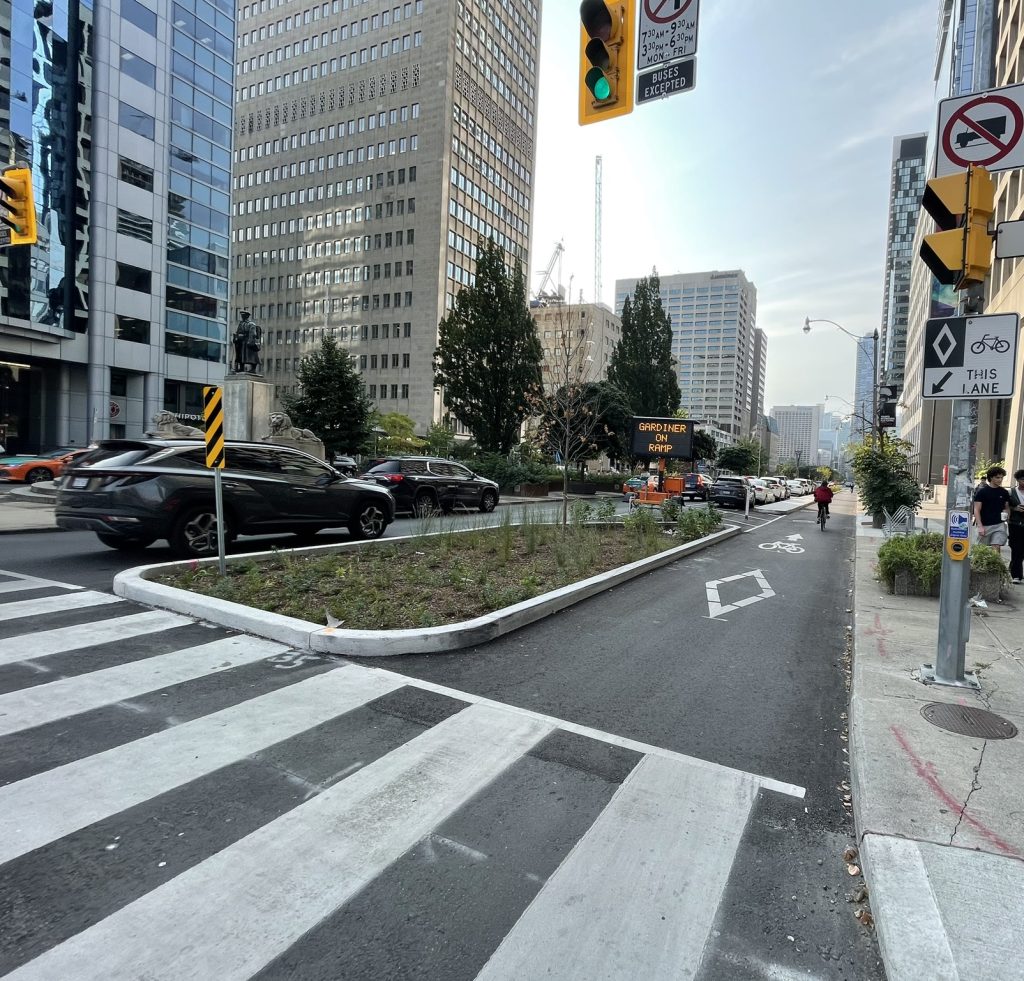
Sections of University Avenue and Queens Park Crescent East are scheduled for watermain replacement and road resurfacing/restoration between 2023 and 2026, including:
Transportation Services evaluated these sections of University Avenue and Queens Park Crescent East to identify opportunities for integrating safety and cycling improvements as part of the roadway construction and to align with the Council-approved Vision Zero Road Safety Plan. These features continue to provide safety for pedestrians and people cycling and driving on University Avenue and Queens Park Crescent East, while also improving accessibility, durability, and neighbourhood beautification.
Beginning in September 2025, the City will replace the watermain and the City-owned portion of substandard water services on Queens Park Crescent East from College Street to Queen’s Park. As part of roadway restoration, permanent concrete curbs will be added between the existing cycle track and motor vehicle lanes for enhanced separation. To prevent buses from having to enter the cycling area, the existing cycle track will be raised to sidewalk level at transit stops, with a platform built for pedestrians to cross the cycling facility and board or disembark from the bus.
During construction, the northbound cycle track on Queens Park Crescent East will be closed and the roadway reduced to a single travel lane. Road users should expect delays and increased traffic on nearby streets. When driving, please be mindful of vulnerable road users such as pedestrians and people cycling. Motorists are reminded to share the lane with people cycling, who have the right to utilize the full lane when riding with mixed traffic. When passing a cyclist, the Highway Traffic Act requires motorists maintain a minimum distance of one metre between their vehicle and the cyclist.
Cyclists are encouraged to use the alternate northbound cycling routes via St. George Street or Bay Street.
Please see the Construction Notice for more details.

Watermain replacement and road resurfacing/restoration was completed for the west side of University Avenue in 2024. Upgrades included:
Upgrades on the east side of University Avenue include:
As part of the ActiveTO temporary cycling network, cycle tracks were installed on University Avenue/Queens Park Crescent between Bloor Street West and Adelaide Street West in 2020, and were extended further south to King Street West in 2022. This is the only protected and accessible north-south cycling route west of Yonge Street that connects the Bloor Street cycle tracks to the Richmond-Adelaide cycle tracks.
After they were made permanent by City Council in December 2021, the University Avenue/Queens Park Crescent cycle tracks pavement markings were refreshed to bring them up to standards with added safety features, such as decorative curb extensions at key locations along the route, which reduce crossing distances, improve sight lines and reduce turning vehicle speeds.